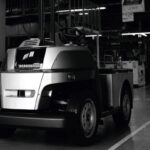ASIA ELECTRONICS INDUSTRYYOUR WINDOW TO SMART MANUFACTURING
Panasonic Expands Sensing Lineup With New Grid-EYE-90
Panasonic Industry has launched a new member of its popular Grid-EYE sensor family that features a 90° lens. Thus, delivering a wider field of view (FoV) and reducing the number of sensors required to cover a given area.
Privacy-conscious designers have appreciated the 64-pixel resolution of the Grid- EYE family, and the Grid-EYE 90° will enhance systems designed to track and count the movement of people tracking as well as other applications.
Comments Osamu Mitsumura, Product Manager at Panasonic Industry Europe: “Today, industries want to understand and optimize the use of their buildings…The holy grail of people-tracking/counting solutions has always been Scalability and cost-effectiveness. Grid-EYE 90° delivers both.”

New sensor with 90° field of view
Previously, Grid-EYE has been used in a variety of applications where absolute temperature values are necessary.
At the same time, Grid-EYE is also highly suitable for people tracking/counting applications. Innovative product designers have used Grid-EYE 60°. Thus, it is a cost-effective alternative to camera or wireless solutions.
Moreover, the new variant of Grid-EYE builds on Panasonic’s deep expertise of innovative sensing technologies. The new 90° wide-angle lens allows Grid-EYE to have a wider field of view (FoV), improving on previous sensors which offer a 36° and 60° FoV. With the launch of Grid-EYE 90°, system designers can capture the IR signature of a larger area. Thus, fewer sensors are necessary to cover a given area. This makes it an ideal choice for enhancing the efficiency of people tracking/counting devices.
Low-Res Infrared and Machine Learning: A new approach to counting and tracking
Successful data acquisition using Grid-EYE is only the first step in successfully counting people. Different techniques can be employed to exploit the sensor data. The use of standard signal processing algorithms works well. However, it can run into difficulties with infrared sensors. Unlike visual spectrum devices where the quality of data is unambiguous, infrared signals can be tricky to handle when employed in devices. Especially, the ones with low resolution which can pick up noise very easily, such as Grid-EYE.
One way to overcome this problem is to use machine learning (ML). ML is a subset of Artificial Intelligence (AI)h techniques and emphasizes on the use of self-learning neural networks to derive inferences from the input data.
The neural network can be trained using a known annotated dataset to design a ML model, which can be then deployed in field. This allows offloading complex tasks to neural networks, which previously required customized algorithm and expensive hardware.
Collaboration with CN Group on Dataset acquisition
An ML model with good performance can only be built by training on a good quality dataset. Contrary to more common applications like computer vision where there are rich datasets already available, sensors like Grid-EYE do not often have any datasets to begin with. Thus, recognizing the need to bridge this gap, Panasonic has started a collaboration with CN Group, a software company which is part of the Ciklum company. CN Group has expertise in a wide array of topics including mechanical design, embedded electronics hardware and software, machine learning and IoT.
In addition, using a hardware setup which includes Grid-EYE sensor and a camera, CN Group is working to build datasets containing visual and thermal information from an observed scene. Furthermore, using computer vision techniques, the dataset is automatically annotated when humans are detected in the field of view of the camera. CN Group’s contribution in creating quick annotated datasets opens a wide array of possibilities in creating customized thermal datasets for any given location – meeting rooms, staircases, etc.
Meanwhile, Panasonic and CN group believe that that this collaboration will enable more customized/personalized ML systems for people-tracking/counting using Grid-EYE.




